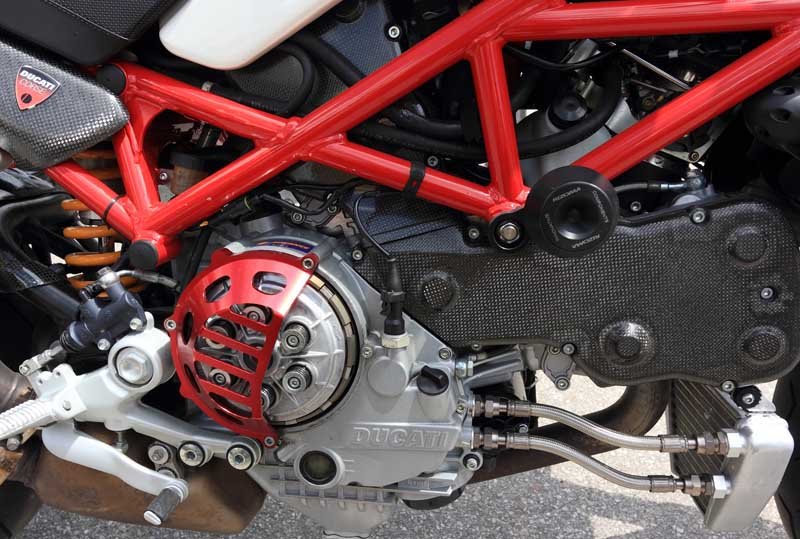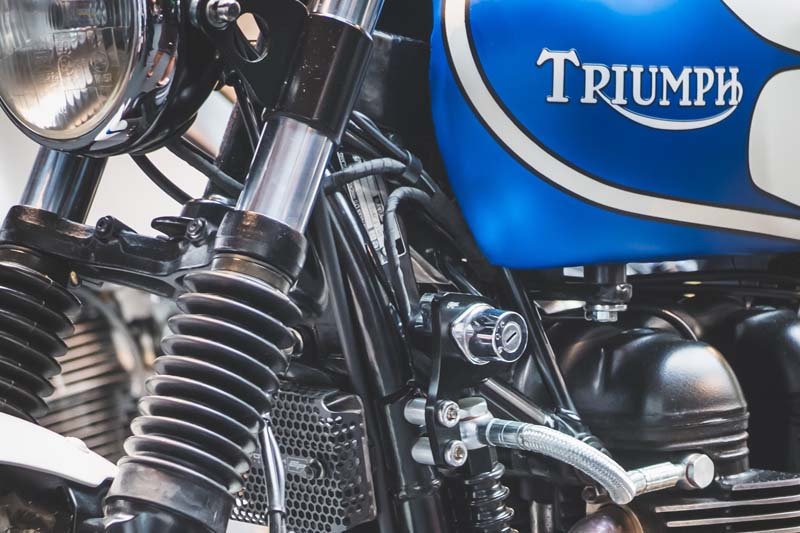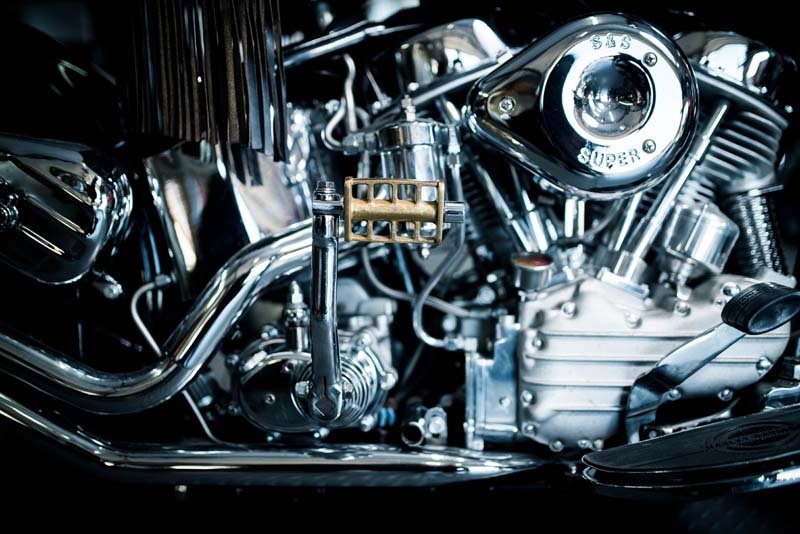Picking the perfect brake pads for your ride has an influence on how safe you are, how well your whip handles, and what you’ll shell out over time. You’ve got a whole menu, from wallet-easy organic pads to fancy ceramic or semi-metallic types. To get why budget brake pads ain't the same as the pricier […]

The 7 Most Common Causes Of Poor Gear Shifts On Motorcycles
As a motorcyclist, appropriate bike riding involves more than simply examining dead spots and putting on proper protective equipment, it additionally requires regular as well as routine maintenance. It is important to know particular fundamental upkeep pointers yourself.
Motorcycle gear not changing smoothly is one of the typical troubles connected with bike gears.
While the poor shift might be caused by the means you run your bike, there are numerous other factors that may also add to an inadequate shift.
Each of these factors in causes of poor gear shifts on motorcycles is described thoroughly listed below.
Table of Contents
#1 Chain Tension
One of the most usual faults that the motorcyclist will certainly experience that will impact a shifting will be the tension on a chain.
Motorbikes with chain-driven systems have a key drive chain running between the clutch hub as well as engine output gear. When a bike shifts gears, what is typically happening is the clutch is slowly launched and involves a new gear ratio inside the transmission. After the next gear ratio is involved, power is that sent out the front chain sprocket, creating the chain to revolve at a brand-new speed and after that move power out through the back wheel.
A chain that is either also loose or too tight, will certainly trigger the bike to shudder or jerk as the biker shifts gears. Make sure to establish the chain tension set up according to the manufacturer's manual.
#2 Low Engine Oil Levels
Another usual failure item that might occur that will trigger a bike to not shift properly is old/low clutch liquid.
When the liquid on among these systems is low, the moving will not be very smooth. The effects of reduced engine oil also consist of-- engine getting too hot, wear and tear, and also carbon deposits. This can lead to destructive clutch plates, cylinder lining, piston, and also engine shutoffs.
That's why the engine oil needs to be altered often to avoid low engine oil degrees. The frequency of oil change depends on the construct of the bike, the kind of oil you use, exactly how old the motorbike is, what condition the motorcycle and also engine remain in, just how you utilize your bike-- for brief trips, long trips, and so on.
#3 Clutch Cable
On bikes that don't have a hydraulic clutch lever, they're going to have a cable-style clutch. An improperly adjusted cable can trigger serious damage to a bike's transmission, as well as correct adjustments must be preserved.
When the slack is tight, pulling the clutch wire completely will not be enough to completely launch the clutch plates.
So, it is extremely vital to change the clutch by providing it the correct slack. Guarantee that the wire has some free play to run as well as at the same time, the slack needs to not be excessive.
A basic thumb policy is to preserve the clutch slack at 2mm to 3mm. Nonetheless, if your auto-manufacturer has actually given details slack measurements in the guidebook then opt for the suggested specifications.
If you do not have any kind of company requirements, try adjusting for 2mm to 3mm. Inspect whether the motorbike works penalty, if you feel it is still too limited or loosened up, readjust appropriately.
The exact same trouble happens when the clutch cable has too much slack. This is the opposite of the above situation where there isn't much slack in the cable.
If the slack is too high, more than the needed specifications, the clutch can slip even when you have actually fully released the bar.
Once more, you need to readjust the clutch cable by offering it sufficient slack however not too much. Maintain the slack according to the maker referrals pointed out in the individual manual.

Check Your Bluetooth Intercom On Fodsports
#4 Gear Shift Mechanism Problem
The causes of poor gear shifts on motorcycles can be due to a negative change mechanism. The change device is essentially a drum-shaped device or spring-loaded camera that operates the sliders by means of shift forks. Rust, damage, or friction because of wear can cause problems in changing gears smoothly. The negative system can be really felt through the gear shift lever.
If you commonly change the elevation of the change pedal, the link may wind up obtaining constrained against itself. As a result of this, when you finally make the change, you can not fully engage the equipment considering that the change claw is stopped from being pushed much sufficient. As a result, if you have actually made any type of current adjustments, it is best to initially check the exterior linkage if you begin experiencing inadequate moving.
#5 Clutch Drag
In Winter, when the bike has transformed chilly, shifting into gears becomes difficult. Hard and too much gear clash creates clutch drag. The reason is the clutch cable here. You need to readjust it by loosening up the securing adjustment and then functioning the clutch lever a couple of times. After swinging the handlebars to fully secure both instructions, you can proceed as well as re-engage the locking mechanism. This loosens up the clutch as well as makes gear moving smoother.
In the winter seasons, leave the bike in neutral for few minutes to allow the liquids to warm up. This helps in smoother gear change.

#6 Warped Clutch Plates
If you have actually recently ride a motorcycle for a long-distance trip, then there is an opportunity that the clutch was overheated because of riding the bike under full power for extended periods.
Warped clutch plates can be because of these factors-- no free play in the clutch bar; clutch plate not readjusted properly; shifting gear without drawing in the clutch; launching the clutch lever all of a sudden; as well as negligent riding with incorrect clutch use.
Whenever you are driving with a deformed or burnt clutch plate, you will feel that the gear is not moving efficiently as well as the pickup has actually gone down.
In distorted clutch plates, there will be lots of massages and rubbing between the clutch plates resulting in their damages. That's why distorted clutch plates need to be attended to as early as feasible in a motorcycle.
For the distorted clutch plates issue, you need to visit your technician to take care of the clutch plates. Also, imbalance in clutch plates requires to be readjusted again.
#7 Riding Experience
If you are a new rider, you may make a jerk when changing or shifting the gears. It can not be refuted that occasionally, bad shifting is caused just by the lack of experience on the side of the motorcyclist.
It truly isn't tough to be smooth. Be patient with the clutch launch, don't simply pop it out after shifting. Utilize the three-part shift process: Roll off the throttle, as you squeeze in the clutch ... make your change up/down ... slowly launch the clutch as you roll back on the throttle.
Make certain that you spend time refining your changing skill to ensure that you do not end up jeopardizing on either grip or control via stumbling as well as sudden gear transitions.

Motorcycle mechanic, writer. Interested in motorcycle gear for years. Like to stay up to date with the newest products and techniques of the motorcycle.
E-bikes have transformed into more than just gadgets to help you get around. Now, they're speed demons that can go toe-to-toe with motorbikes. It’s 2025, and these speedy machines have gotten a huge boost from better motors, more powerful batteries, and sleek designs that cut through the air like a knife. Let’s dive into the […]
Many riders who aren't so tall or ladies just starting to ride bikes need to pick out the best Motorcycles for Short Riders and Women. They gotta look for three key things: a seat that's not too high up, a bike that's not too heavy, and something that looks good enough to give them confidence. […]
As we accelerate into 2025, motorbikes are getting a serious tech upgrade. They’re all about safer rides and more fun on the road. Even if you’re a pro or just starting, kitting out your two-wheeler with cool tech stuff is a game-changer. Check out these ten top motorcycle gadgets each motorcyclist will want in 2025. […]
Getting around the city every day can be super annoying. You've got traffic like molasses nowhere to park, fuel prices through the roof, and buses stuffed like sardine cans make heading to the office a real pain. For loads of folks, getting a motorcycle is a pretty slick move—they’re nimble, cost-effective, and perfect for squeezing […]
Rider safety demands motorcycle helmets. Yet, riders still clash over picking full-face vs open-face helmets. Full-face ones take the win for protecting in crashes, but open-face models charm folks who want cool looks better air, and that old-school vibe. This guide dives into the latest research, technological advancements, and real-world insights to help you decide […]



Mijn intruder 1400cc schakelt heel stroef, weet u wat de oorzaak is ?
The stiff shifting on your Intruder 1400cc motorcycle could have several potential causes. It may be due to issues such as:
01. low or contaminated transmission fluid;
02. a misadjusted clutch cable;
03. worn clutch plates
04. a problem with the shift linkage.
Additionally, mechanical wear and tear or improper clutch usage could contribute to the stiffness. It is recommended to have a professional motorcycle mechanic diagnose the issue. They can accurately identify the cause and perform any necessary repairs or adjustments.